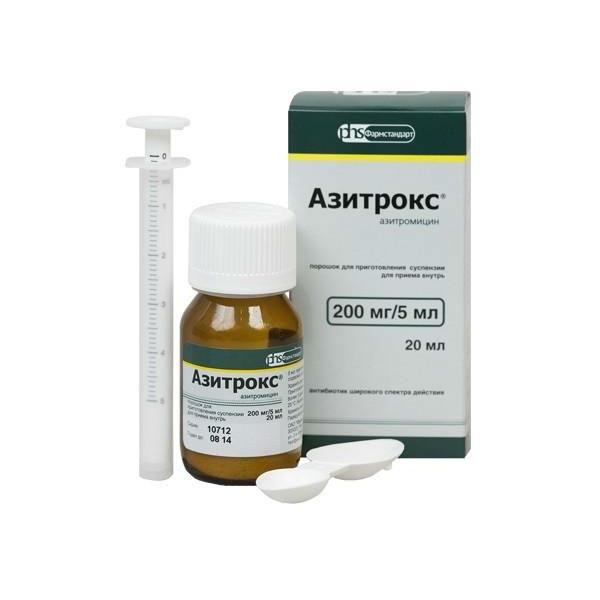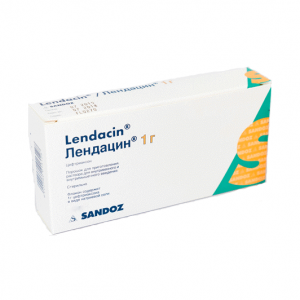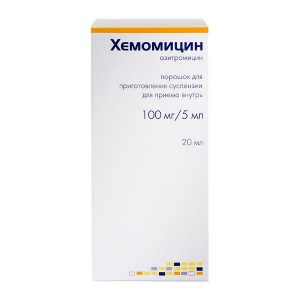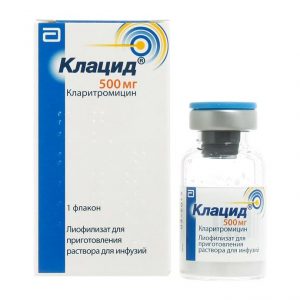Description
Release form
Powder for oral suspension
Packing
Bottle 20 ml.
Pharmacological action
Azitrox® is a broad-spectrum antibiotic. It is the first representative of a new subgroup of macrolide antibiotics – azalides. When creating high concentrations of inflammation in the focus, it has a bactericidal effect.
Gram-positive cocci are sensitive to azithromycin: Streptococcus pneumoniae, St. pyogenes, St. agalactiae, streptococci of CF and G groups, Staphylococcus aureus, St. Viridans gram-negative bacteria: Haemophilus influenzae, Moraxella catarrhalis, Bordetella pertussis, B. parapertussis, Legionella pneumophila, H. ducrei, Campylobacter jejuni, Neisseria gonorrhoeae and Gardnerella vaginalis are some anaerobic microorganisms: Bacteroides bivius, Clostridium perfringens, Peptostreptococcus spp as well as Chlamydia trachomatis, Mycoplasma pneumoniae, Ureaplasma urealyticum, Treponema pallidurger Borllurgerum pallidurgdum Borrellumum Borrelumdum Borrellumum Borrellumum Borrellumum Borrellumum Borreleumdum
Azithromycin is inactive against erythromycin resistant gram-positive bacteria.
Azithromycin persists in bactericidal concentrations in the focus of inflammation for 5-7 days after the last dose, which allowed the development of short (3-day and 5-day) courses of treatment.
Indications
– Infectious and inflammatory diseases caused by microorganisms sensitive to the drug:
– Infections of the upper respiratory tract and ENT organs (tonsillitis, sinusitis, tonsillitis, otitis media)
– Scarlet fever
– lower respiratory tract infections (infections atypical pneumonia, bronchitis)
– Infections of the skin and soft tissues (erysipelas, impetigo, secondarily infected dermatoses)
– Infections of the urogenital tract (uncomplicated urethritis and / or ceresitis)
– Lyme disease (borreliosis), for treatment oia of the initial stage (erithema migrans)
– A disease of the stomach and duodenum associated with Helicobacter pylori.
Contraindications
Hypersensitivity to azithromycin and other macrolide antibiotics.
Use during pregnancy and lactation
Azithromycin crosses the placental barrier. Use during pregnancy is possible only in cases where the intended benefits to the mother outweigh the potential risk to the fetus.
If you need to use azithromycin during lactation, you should decide whether to stop breastfeeding.
Special instructions
Not recommended for use in patients with impaired liver function.
Use with caution in cases of impaired renal function.
Azithromycin should be taken at least 1 hour before or 2 hours after a meal or antacids.
Composition of
5 ml of the finished suspension contains:
azithromycin 200 mg.
Dosage and administration
Set individually, taking into account the nosological form, the severity of the disease and the sensitivity of the pathogen.
Adults inside – 0. 25-1 g 1 time / day for children – 5-10 mg / kg 1 time / day.
Duration of administration is 2-5 days.
Side effects of the
From the digestive system: nausea, vomiting, flatulence, diarrhea, abdominal pain, transient increase in the activity of liver enzymes rarely – cholestatic jaundice.
Allergic reactions: rarely – skin rash, angioedema, erythema multiforme, Stevens-Johnson syndrome, toxic epidermal necrolysis.
Dermatological reactions: rarely – photosensitivity.
From the side of the central nervous system: dizziness, headache rarely – drowsiness, weakness.
From the hemopoietic system: rarely – leukopenia, neutropenia, thrombocytopenia.
From the cardiovascular system: rarely – chest pain.
From the genitourinary system: vaginitis rarely – candidiasis, nephritis, increased residual urea nitrogen.
Other: rarely – hyperglycemia, arthralgia.
Drug Interactions
When used together with ergot alkaloids, the risk of ergotism cannot be ruled out.
With the simultaneous use of azithromycin with warfarin, cases of increased effects of the latter have been described.
With the simultaneous use of digoxin or digitoxin with azithromycin, a significant increase in the concentration of cardiac glycosides in blood plasma and a risk of developing glycoside intoxication are possible.
With simultaneous use with disopyramide, a case of ventricular fibrillation has been described.
With simultaneous use with lovastatin, cases of rhabdomyolysis have been described.
When used concomitantly with rifabutin, the risk of developing neutropenia and leukopenia is increased.
With simultaneous use, cyclosporine metabolism is disrupted, which increases the risk of adverse and toxic reactions caused by cyclosporin.
Storage conditions
In a dry, dark place at room temperature. Keep out of the reach of children.
Expiration
2 years. Prepared suspension – no more than 5 days.
Deystvuyuschee substances
Azithromycin
Pharmacy terms
Prescription
Form of Treatment
suspension dlya accepts vnutry
Appointment
Children by physician’s appointment, Adults by physician’s appointment, Children over 3 years old
Indications
Tonsillitis, respiratory tract infections, urethritis, Angina , Otitis media, Infectious diseases, Bronchitis, Cystitis, Skin infections, Pulmonary inflammation, Sinusitis, Pharyngitis
Possible product names
AZITROX 0.2 / 5ML 20ML N1 FLAK POR D / SUSP VN
Azitroks pore d / suspension d / inside approx 200mg / 5ml 15.9g + mern spoon + pipette doses ind unitary enterprise *
Azitroks por d / suspension d / intr. 200mg / 5ml 15.9g fl + mern spoon + pipette doses ind ind unit
AZITROX POR. D / PRIG. SUSP. D / RECEPTION INSIDE 200MG / 5ML 20ML No. 1
Azitrox pore. d / preparation. suspension for oral administration, fl 200mg / 5ml 15. 9g Russia
Pharmstandard-Leksredstva, Russia




